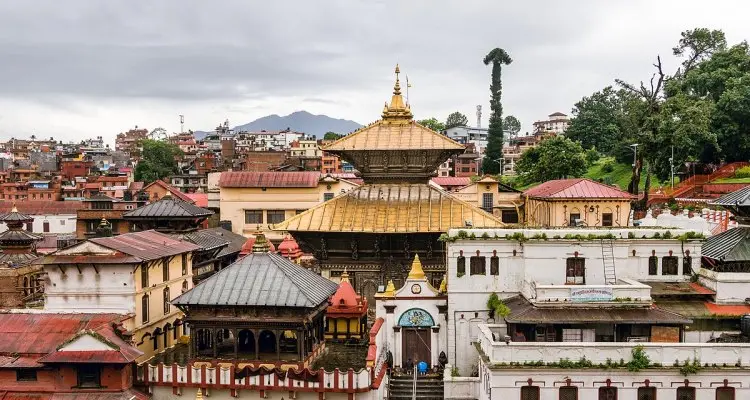Discovering Nepal: A Comprehensive Guide to Pashupatinath Temple
Why Visit Pashupatinath Temple?
The Pashupatinath Temple, one of Nepal’s most sacred Hindu shrines and a UNESCO World Heritage Site, draws spiritual seekers and cultural enthusiasts from all around the globe. It’s a splendid embodiment of Nepal’s rich history, vibrant culture, and profound religious reverence.
The temple’s setting, nestled alongside the banks of the sacred Bagmati River, is itself captivating. The complex is not just a religious site; it’s a mosaic of art, culture, and history. With its stunning array of architecture and collection of numerous shrines, this ancient site boasts exquisite examples of Nepalese craftsmanship spanning centuries.
Pashupatinath Temple is dedicated to Lord Shiva and is recognized as one of his most significant sacred abodes on earth. It’s believed that those who die in Pashupatinath Temple are reborn as humans, regardless of any misconduct that may mar their life record. Such strong beliefs and fascinating tales wrapped around this holy site make it a must-visit place in Nepal.
Location and Route
Pashupatinath Temple is located in Kathmandu, the capital city of Nepal. The temple lies on the eastern side of the city, roughly 5 kilometers from the city center. It is conveniently accessible via taxi, bus, or even by foot if you’re staying nearby.
From Tribhuvan International Airport, it’s a short ride of about 6 kilometers. You can hire a taxi directly from the airport, and it should take about 20-30 minutes, depending on traffic.
When visiting from other parts of Nepal, it’s usually best to first reach Kathmandu. The city is well connected by air and road. Several domestic flights operate from cities like Pokhara, Bharatpur, and Biratnagar to Kathmandu. Bus services are also available from various parts of the country
When to Visit
Pashupatinath Temple is open year-round, but the time of your visit can significantly affect your experience. The temple is particularly bustling during Hindu festivals like Maha Shivaratri, Teej, and during the Nepali New Year.
During Maha Shivaratri, which usually falls in February or March, hundreds of thousands of devotees from around the world congregate to celebrate and pay their respects.
However, if you’re seeking a calmer, quieter experience, it’s best to visit outside of these periods. Regardless of the season, the temple complex opens at 4 AM and closes at 9 PM. Remember that the main temple is accessible only to Hindus, but all other parts of the complex are open to everyone.
What to See
Pashupatinath Temple is a world in itself, teeming with history, culture, spirituality, and fascinating sights.
1. Main Temple
The main temple, with its pagoda style architecture and gilded roof, houses the sacred Jyotirlinga of Pashupatinath. While only Hindus are allowed inside, non-Hindus can appreciate the temple’s intricate exterior from the other side of the Bagmati River.
2. Bagmati River
This holy river, where rituals and cremations take place, is a poignant sight. It is especially worth witnessing the Arya Ghat, where royal family members are cremated.
3. Other Shrines
There are several other smaller temples and shrines dedicated to different deities around the complex. These include the Vaishnava Temple, Surya Narayan Temple, and the Ram Mandir, each with their own unique attributes and histories.
4. Deer Park
Beyond the temples and spiritual rituals, the temple complex is also home to a beautiful deer park, embodying the peaceful coexistence of spirituality and nature.
5. Cultural Experience
Witness the “Aarati” at the Pashupatinath Temple. The evening Aarati, a ritual of light and fire, offers an incredible cultural experience. The synchronized ringing of bells, chanting of prayers, and the warm glow of the fire make it a mesmerizing spectacle.
In conclusion, Pashupatinath Temple isn’t just a place of worship; it’s a journey into an ancient world, a living culture, and a testament to Nepal’s enduring spirituality. Whether you are a devotee, a history buff, an art enthusiast, or a cultural explorer, this iconic temple has something to offer you. The stories that it holds within its sacred grounds invite you to immerse yourself in its deep spirituality, history, and cultural significance.



